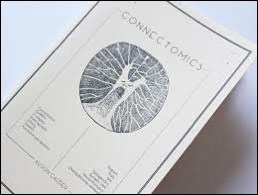By Alison Calder
Published by Jackpine Press Review
$30 ISBN 978-1-927035-21-4
Into the laboratory we go: the 14 poems in established writer and Winnipeger Alison Calder’s Connectomics are like little scientific explosions of light. Things you didn’t know you’d want to know but are glad you know now. In her words, “The idea is\to render the brain\transparent enough to read through.” That’s heady stuff, but Calder takes this concept and renders it into thought-provoking poems that show she’s a master of metaphor, and prove her literary experiments work.
The brain as poetic fodder makes good sense. It’s complex, essential. And Calder, who teaches Canadian literature and creative writing at the University of Manitoba, explores it from interesting angles. In Clarity2 she imagines the mind of a mouse that’s had firefly genes spliced into for Alzheimer’s research. “Inside his skull\the past incinerates” she writes, “fragments\of a film that’s not replayed.” On the page opposite this short poem there’s a white image (on black) of a brain. It looks like a medical image and it resembles art.
The subject of the next poem, C Elegans3, is “a small, soil-dwelling nematode.” (The accompanying drawing reminds me of paramecium from high school biology class). “I’m useful because I die quickly:\your funding agencies approve.” I’m going to go out on a limb here and suggest that Calder may be the only poet in history to appropriate the voice of C Elegans3. The barn owl — “a spirit with a heart-shaped face” — is also used in connectomics research.
It’s the metaphors that really stand out in this smart chapbook. In the poem Science6, we read that consciousness is a “cable, a cord tying things down in a truck box\so they don’t fly out,” and the skull is “a box of books you move\from house to house to house.” In another poem, the brain is described as “a dense constellation\of carefully mapped drawers.” How original. I applaud and appreciate this use of everyday objects: it balances the potentially difficult-to-grasp scientific matter and brings it right down to Earth where we can see and understand it.
Not all of the poems are as cerebral as the opening pieces. Memories also worm their way into this collection, and here the poet fires up our senses with specific details on a prairie night when “the whole sky’s a theatre”: “rough boards scratch your sunburned legs\and catch the seat of your bathing suit” (Functional Specialization7). I feel that.
The explanations at the bottom of each page are fascinating on their own — in their controlled conditions’ studies of fear memories, “scientists subject patients to electric shocks while introducing unique scents like lemon or mint.” Then they see how their subjects react to these scents during sleep. Who knew? And have you heard of optogenetics? This is the use of “a burst of light to affect genetically sensitized neurons in the brain” so “researchers can manipulate a subject’s moods or behaviours.” Crikey.
Oh, the many things we humans don’t know. And the growing number of things we do. Connectomics is mind-opening.
This book is available at your local bookstore or from the saskatchewan publishers group www.skbooks.com.




